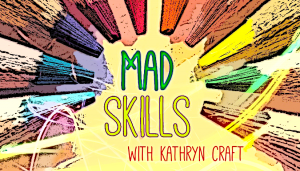Writer Unboxed Publishing
As many may recall, in July, after a few years watching independent publishing go from vanity press to a viable path to publication, and after kicking the idea around, we took the plunge and decided to experiment with a project we are calling Writer Unboxed Publishing. We had no idea how the project would evolve – we needed a guinea pig! I offered up my novel Steel and Song: The Aileron Chronicles Book 1, to gauge the feasibility of such a venture.
Since then we’ve gathered valuable metrics. We’re still in the discovery phase of WU Publishing, but one thing is clear: the response of the WU community to both the proposed venture and to Steel and Song has impacted our thinking in unexpected ways. An engaged, active population is one of the strengths of the WU brand, and while we anticipated WU would be supportive in general, we were blown away by the magnitude of support and enthusiasm. I want to thank everyone who bought a copy, tweeted, Facebooked, blogged, left a review, and were in general amazing. We could not have asked for a better launch.
If we move ahead with this project, we’d like for WU Publishing to be more than an independent publisher. Because the strengths of WU are unique (and awesome), we would want WU Publishing to align with WU’s culture and leverage those strengths to both the benefit of the authors who are considering publishing under the WU imprint, and readers who are looking for unboxed books.
How we leverage those strengths to produce successful books is what we are currently focused on. Those strengths are:
Read MoreGreetings, lovely WU community. Kath here, back from the dead, with Therese. We invite you to gather ’round and let us tell you a story of endings, beginnings, and another WU experiment…
Prologue. The year is 2006. Kath is eagerly clicking open an email from her then-agent. She’s been working with said agent for a couple years now, shopping historical novels with a Gothic twist, but the traditional publishing world, awash in sexy dukes and vampires, with a voracious market looking for more of the same, isn’t interested.
But this, Kath thinks, this book is different. Written during a particularly dark time of her personal life, when a very close relative was sent to the Green Zone to serve during Operation Iraqi Freedom, she channeled her emotions into a fantasy novel that is by turns mordant, part steampunk, part fantasy, a romance against a backdrop of war. There’s some inappropriate humor laced in it. It’s her best work, she thinks, and lord she’d been at the writing game for some time now, honing her craft, absorbing the lessons of good storytelling. Surely, this time, it’ll catch.
The then-agent sent a polite, three sentence note. Paraphrase: WTF is this? I need a sexy vampire story, not this war crap. And, uh, I’ll pretend you never sent this to me, okay, and I won’t drop you.
And Kath gets it. Which shelf would this novel sit, if published? It’s genre fiction, but could only charitably be called a mongrel, borrowing from many genres. It’s a weird book. An unboxed book.
Sadly, the book goes in a drawer. Kath starts working as a writer-for-hire for book packagers, to see if she can gain bonafides in a market that is starting to implode under the strains of an economic crash and the digital transition. Slowly, she starts to lose the love she has for writing fiction. An intense day job takes up even more emotional energy. It gets so bad at one point, she stops writing altogether, and takes a step back from Writer Unboxed.
December, 2013.
Kath, with Therese, at a restaurant nursing tea and chocolate:
Read More








